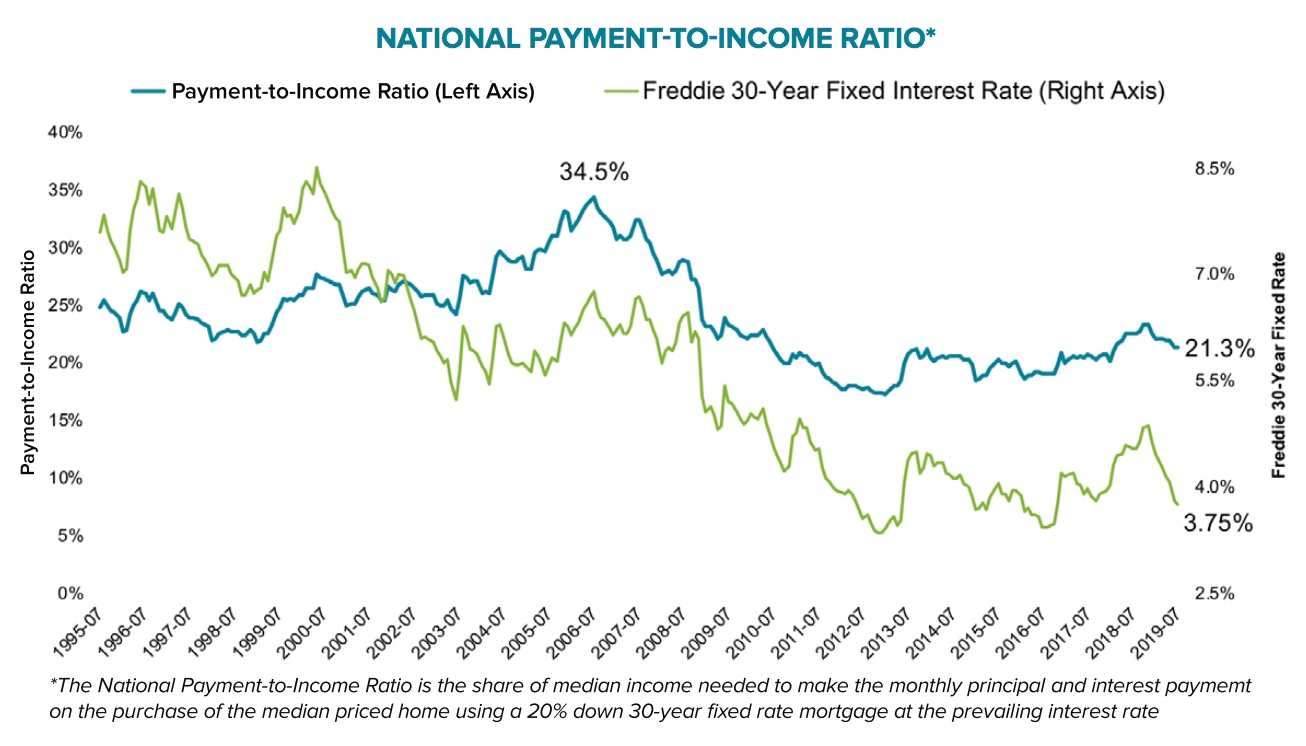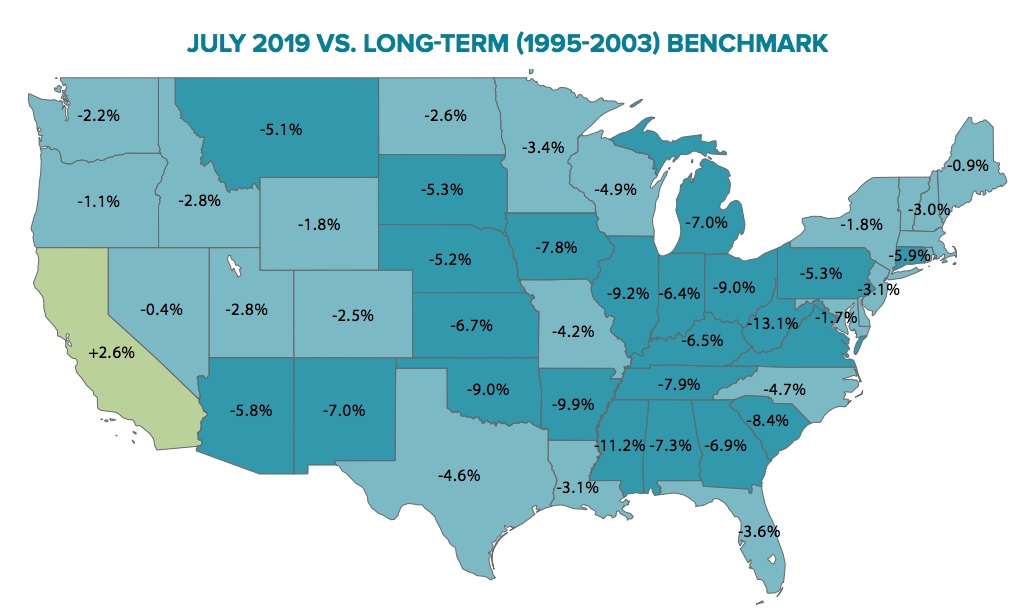Ability to purchase a median-priced home: According to the State Legislature in Q1 of 2019 only 28% of the population in Napa County can afford to purchase a median-priced home compared to Lassen county with 63% (the highest affordable county). A couple of others: San Francisco and Santa Cruz - 20%, Santa Clara - 23%, San Diego - 26% and LA and Mendocino - 27%. For any other counties of interest please contact me.
1 out of 4 homeless people live in California. The states with the largest increases from 2016-2017 are:
California - 16,136 (13.7%)
New York - 3,151 (3.6%)
Oregon - 715 (5.4%)
Nevada - 435 (5.9%)
Texas - 426 (1.8%)
The Minimum Annual Income Required During Affordability Peak (Q4 2012) vs. Current.
Region 2012 Q1 2019 Q1 %CHG
CA Single Family Housing $ 56,320 $ 114,860 103.9%
CA Condo/Townhomes $ 44,440 $ 94,690 113.1%
Los Angeles Metro Area $ 53,780 $ 107,110 99.2%
Inland Empire $ 35,170 $ 76,810 118.4%
S.F. Bay Area $ 90,370 $ 186,230 106.1%
US $ 32,000 $ 53,620 67.6%










